New Vision for Volvo Ocean Race
Published on May 18th, 2017
Gothenburg, Sweden (May 18, 2017) – The Volvo Ocean Race today unveiled a series of radical initiatives that will create the toughest all-round test in professional sailing and strengthen the appeal of the 44-year-old round-the-world race to pro sailors, team owners and their sponsors, race partners, host cities and fans.
While the final preparations are being made for the 2017-18 edition, starting October 22, race organisers used a live event at the Volvo Museum in Gothenburg, the home of the race’s owners and title sponsors, to present a bold vision for the next decade and beyond.
Highlights include the choice of a new 60-foot (18.29 metre) foil-assisted One Design ocean racing monohull, designed by France’s Guillaume Verdier, plus the introduction of a challenging 32-50 foot (10-15m) One Design ‘flying’ catamaran for In-Port Races, for which a new design and build tender process was launched today.
The offshore legs will remain the key to winning the Volvo Ocean Race, but the inshore racing will count more than the current situation, where it acts only as a tiebreaker. That means winning the race in future will demand expertise in both monohull racing offshore and multihull racing in the In-Port Series, as both platforms will be raced by essentially the same crew.
“Three hulls, but not what you might have imagined,” said Volvo Ocean Race CEO Mark Turner, revealing the choice of the next generation One Design boats, and referencing the difficult decision of whether to opt for a monohull or multihull design for the ocean legs, a subject that has been passionately debated by Volvo Ocean Race fans.
The race also announced new initiatives including:
• Putting sustainability at the heart of the race with the Clean Seas campaign of United Nations Environment, and key partnerships with 11th Hour Racing and AkzoNobel that will significantly amplify the global campaign. The sustainability platform is central to the positioning of the race going forward.
• Race activity every calendar year, and the launch of a three-edition Host City tender process with options for tradition-busting new routes and stopover formats.
• Building the pathway to the Volvo Ocean Race for sailors and sponsors, via a partnership with World Sailing, the sport’s governing body.
• A sponsor-focused Global Team Challenge that will form the centrepiece of a Leadership Development and Team Performance Programme – capitalising on race learnings for business and re-using the Volvo Ocean 65 boats after the 2017-18 edition for the on-water part.
“We had a lot of debate about multihull versus monohull and, in fact, the final solution for us is to do both, so there will be three hulls in future editions – a foil-assisted monohull and a ‘flying’ catamaran,” said Volvo Ocean Race CEO Mark Turner.
“The Volvo Ocean Race has always been the ultimate test of a team in professional sport and with these changes – collectively the most radical since the race began in 1973 – we are taking it up another level. The obsession that has led to generations of sailors putting everything on the line to win this race will continue, but to lift the trophy will require more skill, dedication and sacrifice than ever.
“We are staying true to our DNA as an ocean race but we will now also be testing the world’s best sailors to their limits inshore as well.
“At the same time, the commercial offering has so many extra elements added to it making it a powerful business transformation platform. We remain one of the few global, professional, world-class sporting events with a great commercial package that goes with it, with an outstanding Business to Business product, along with a rich heritage and strong consumer, media and employee activation options, much of it built into the campaigns.
“We are fortunate as well to have such strong and consistent backing from our owners Volvo, two decades on from their acquisition of the event. The race has never been in such a strong position as we look to the next decade and beyond.”
Volvo announced the agreement to buy the race from former owners Whitbread 20 years ago and has provided vision and staunch backing ever since.
“Volvo said at the time that the race successfully brings together adventure, sport and high level technology,” said Volvo Group’s Henry Sténson, Executive Vice President for Communication & Sustainability Affairs.
“So while much has changed in the last 20 years, fundamentally, nothing has changed. We’re particularly excited to see the Volvo Ocean Race reinforce that commitment to innovation – an area that is so important to us at Volvo Group.”
In addition, Björn Annwall, Senior Vice President for Strategy, Brand & Retail at Volvo Cars, highlighted the race’s renewed commitment to sustainability.
“Volvo Car Group has been involved in sustainability projects for a long time and we’re excited to see the race strengthen its position as a sporting event that is so in tune with its ocean environment and one that inspires such passion.”
Key announcements from the Gothenburg event:
• Sailing’s ultimate test: From the edition after 2017-18, the Volvo Ocean Race will be contested in a combination of a 60-foot foil-assisted monohull for the ocean legs and a 32-50 foot ‘flying’ catamaran for use in the In-Port Race Series. Together, they will establish the Volvo Ocean Race as sailing’s ultimate all-round test and strengthen its reputation as the ultimate test of a team in professional sport.
• Foil-assisted monohull: The One Design monohull from the in-demand French naval architect Guillaume Verdier will use the latest generation foiling technology to make it incredibly fast to sail and spectacular to watch. Crew numbers are likely to be between 5 and 7, with incentives continuing for mixed male-female crews and youth sailors. The race will build eight of the new monohulls and deliver them from January 2019 onwards. They will be available to lease by teams to reduce campaign start-up costs, with sponsors involved in the current 2017-18 race to be given first option when Notice of Race and Commercial Participation Agreements are published this October.
• IMOCA compatibility: Uniquely, the design brief retains an option to allow the boat platform to be converted, inexpensively and quickly, to a fully rules-compliant short-handed IMOCA boat. The 60-foot IMOCA class boats, used in iconic races such as the solo Vendée Globe, have been the drivers of some incredible technical innovation over the past few decades.
• ‘Flying’ in-shore catamaran: Additionally, the race is launching a tender process for a new One Design 32-50 foot ‘flying’ catamaran for use inshore – a boat that will use some of the technology familiar from the America’s Cup and other new multihulls, albeit in a non-development One Design mode.
• A sustainable future: The race has three pillars of action on sustainability – reduce its own footprint, maximise its impact using its global communications platform, and leave a positive legacy wherever it goes. Centred on a partnership with the United Nations Environment Clean Seas campaign, the focus will be on the call to action ‘Turn the Tide on Plastic’. A founding partnership with 11th Hour Racing is providing the resource to permit significant amplification across all Science, Education and Ocean Summit programmes. AkzoNobel will further boost the education and awareness programme. The Volvo Ocean Race’s long term ambition is to reduce and then eliminate the use of fossil fuels on future boats, while maintaining safety and communication performance, as well as developing new construction methods and operational strategies for the race overall.
• New racecourse and stopover formats: The race is planning big changes to the racecourse and stopover formats over the next decade – moves that will strengthen commercial appeal while preserving its sporting integrity. While the race is committed to two more starts from its home, and important partner, in Alicante, some future races could start and finish outside Europe, and potentially feature a non-stop leg around Antarctica or even a non-stop lap of the planet. But while routes may vary, the race will commit to visiting North America, South America, Australasia, Greater China, and at least 5 major European markets at least once every two editions, providing commercial clarity for any two-cycle plans even without the precise route being known. In addition, Host Cities will be able to choose from a range of flexible stopover formats – from the 24-48 hour pit-stop, to shorter form stopovers of five days, through to traditional ‘two weekend’ stopovers with full activation. The bidding process for the next three editions is launched today.
• Race activity every year; potential shift to two-year cycle: The Volvo Ocean Race Board has asked race management to look into the feasibility of shifting the race to a two-year cycle. That process is still ongoing but what is already certain is that in future there will be race activity of some kind in every calendar year – a clear evolution from the current situation, with a gap of over two years between editions.
• A pathway to the Volvo Ocean Race: The race and its co-owners Volvo Car Group and Volvo Group will become official partners of World Sailing, as part of a long term strategic plan to develop the next generation of offshore sailors and their sponsors by providing a clear developmental pathway. The race will establish Volvo Ocean Race Academies as part of future Host Venue partnerships and will also provide a stepping stone for future offshore sailors into the Olympics, if and when offshore sailing is included, which could be a showcase event as early at Tokyo 2020.
• Leadership Development and Team Performance Programme / Global Team Challenge: Organisers will introduce a new Leadership Development and Team Performance Programme for businesses, focusing on learnings from the race in areas such as leadership and teamwork. The programme will feature a ‘shadow’ ocean race called the Global Team Challenge, designed for sponsors to give their employees a unique experience of the sport under near identical conditions to those faced by the professionals. The Global Team Challenge will be safety focused, raced along part of the Volvo Ocean Race route, in detuned versions of the current generation Volvo Ocean 65s and with a ratio of 3 professional sailors to 8 amateurs. The basic package will be included in the commercial offering for team sponsors, with activation opportunities to support employee development HR programmes, Employer Branding (recruitment and talent acquisition) as well as additional opportunities for B2B and media activation. This programme will also act as a new entry point for future sponsors of teams in the race.
• 50th anniversary celebration: The Volvo Ocean Race began life in 1973 as the Whitbread Round the World Race and 2023 marks its half-century. The race is considering plans for a special 50th anniversary race that will honour the sailing legends who have taken part.
The next edition of the Volvo Ocean Race starts from Alicante on October 22 2017 and will visit a total of 12 Host Cities on six continents. The teams will compete over 46,000 nautical miles (83,000 kms) to the finish line in The Hague at the end of June 2018.
Race details – Race route – Facebook
2017-18 Edition: Entered Teams – Skippers
• Team AkzoNobel (NED), Simeon Tienpont (NED)
• Dongfeng Race Team (CHN), Charles Caudrelier (FRA)
• MAPFRE (ESP), Xabi Fernández (ESP)
• Vestas 11th Hour Racing (DEN/USA), Charlie Enright (USA)
• Team Sun Hung Kai/Scallywag (HKG), David Witt (AUS)
Background: Racing the one design Volvo Ocean 65, the 2017-18 Volvo Ocean Race begins in Alicante, Spain on October 22 2017 with the final finish in The Hague, Netherlands on June 30 2018. In total, the 11-leg race will visit 12 cities in six continents: Alicante, Lisbon, Cape Town, Melbourne, Hong Kong, Guangzhou, Auckland, Itajaí, Newport, Cardiff, Gothenburg, and The Hague. A maximum of eight teams will compete.


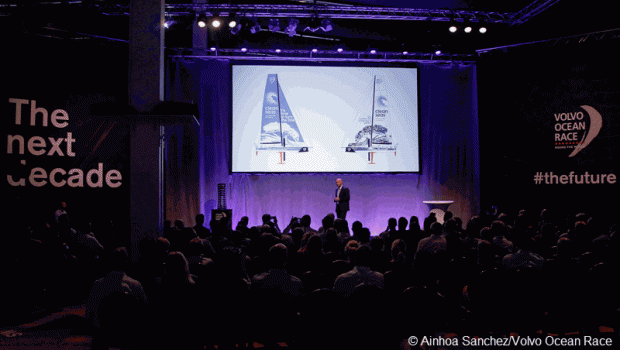

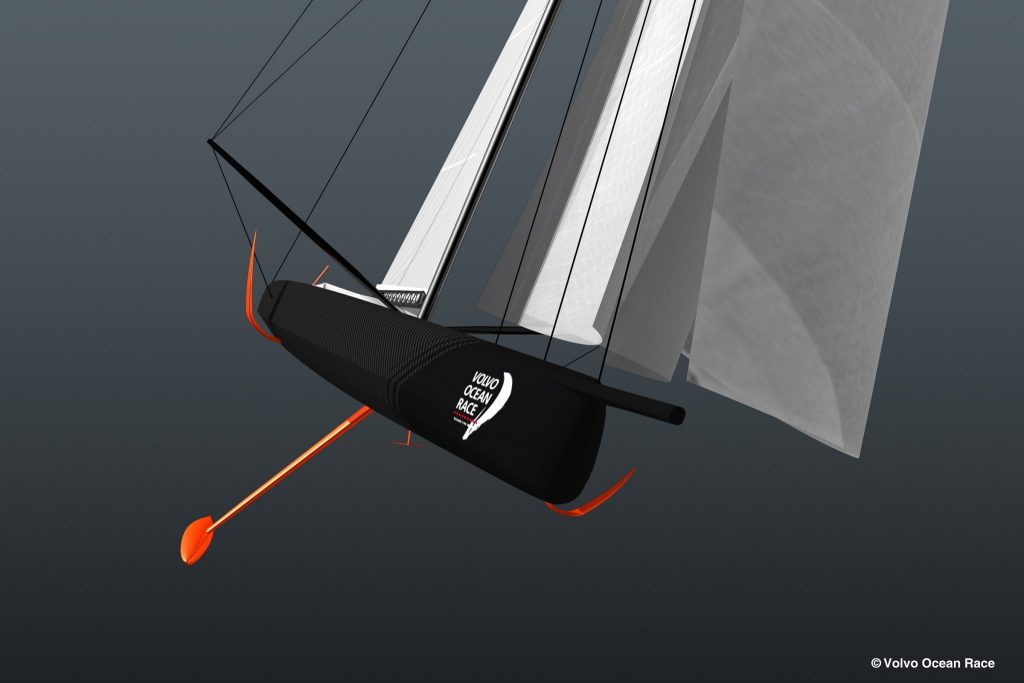
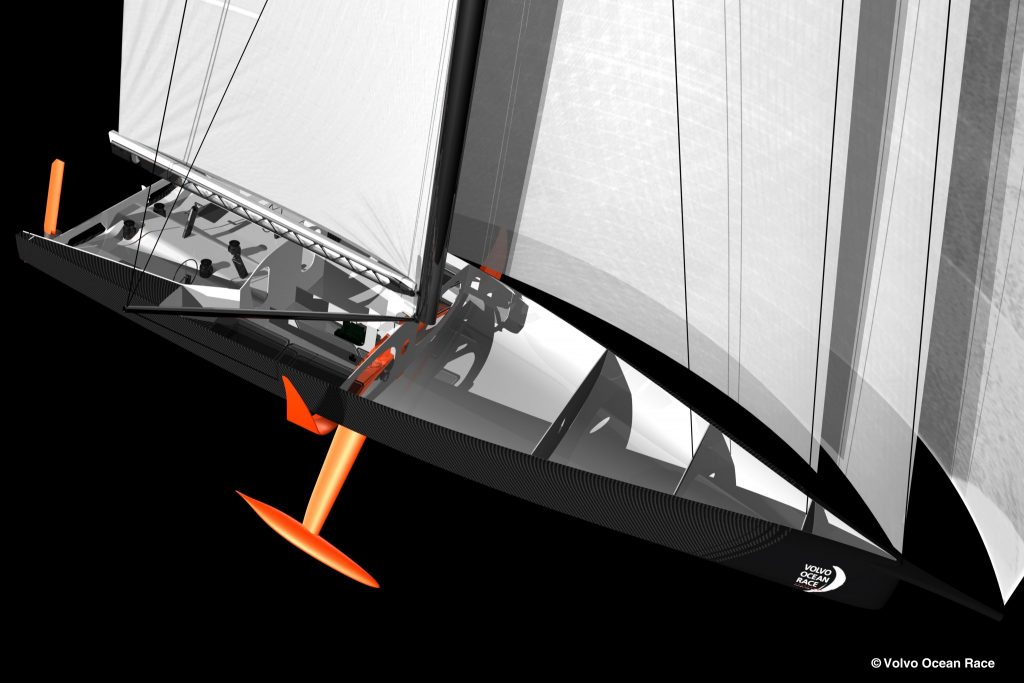
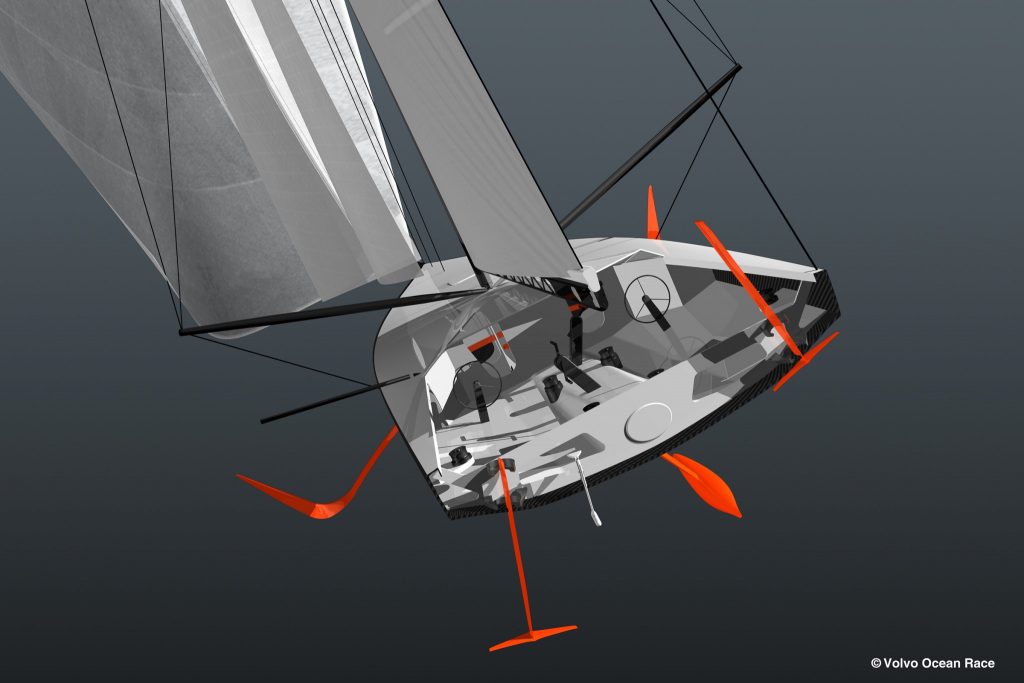
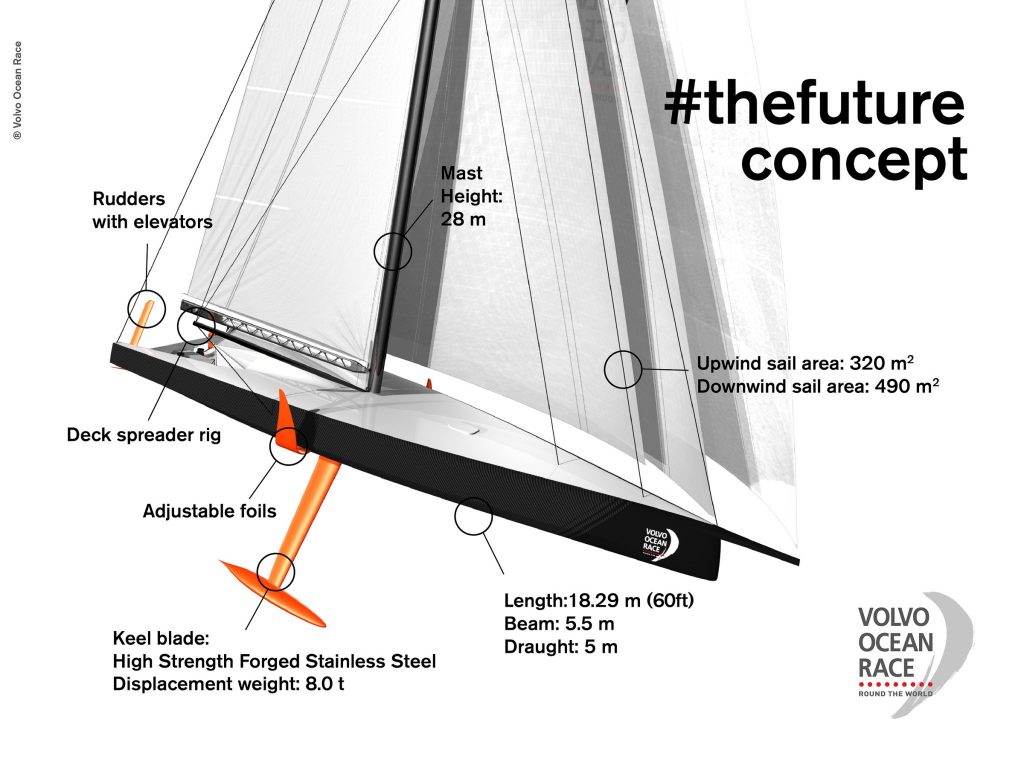
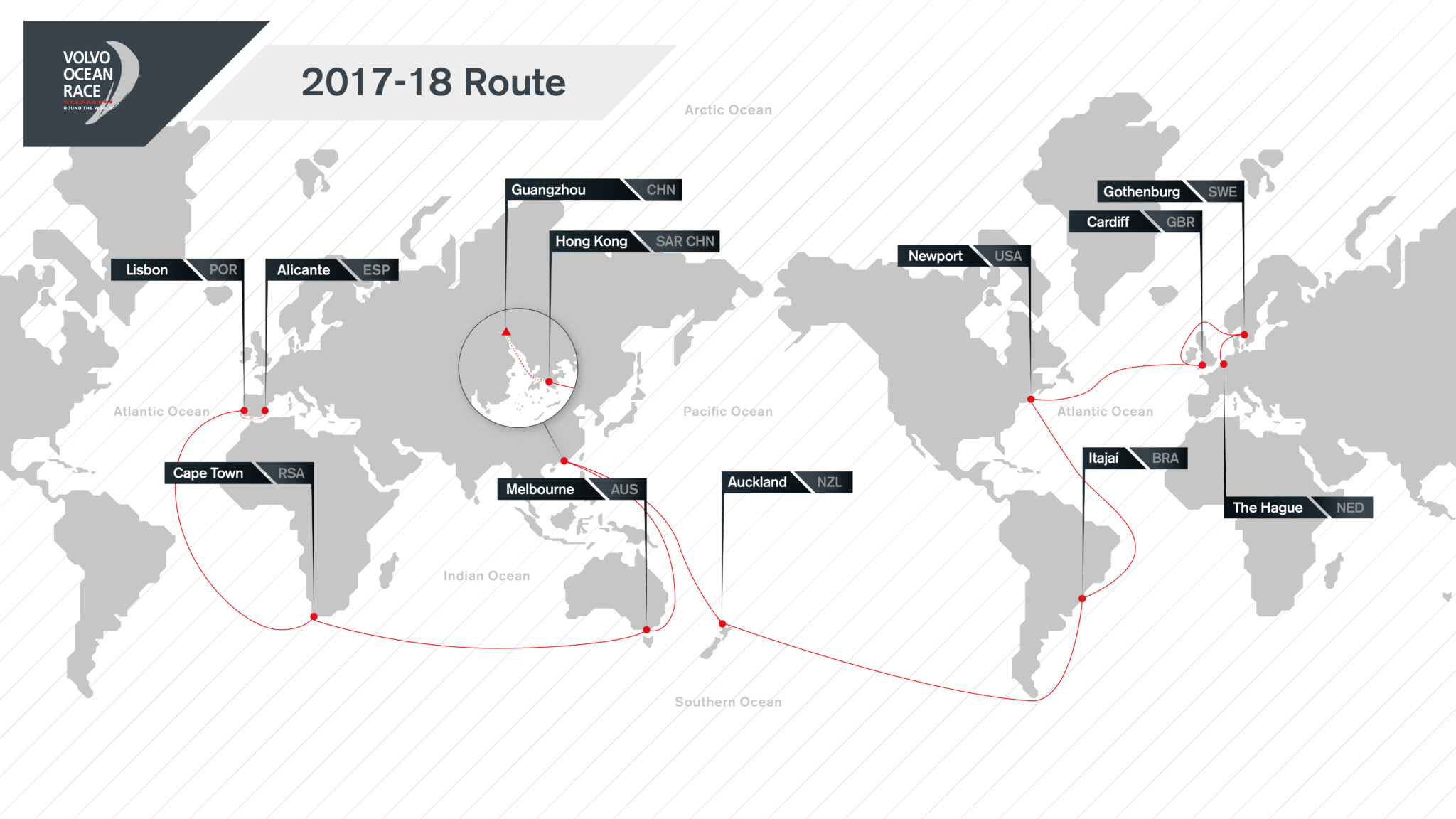

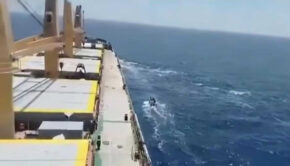
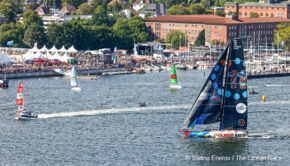
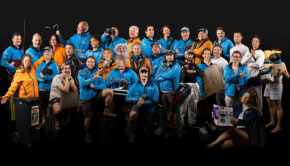
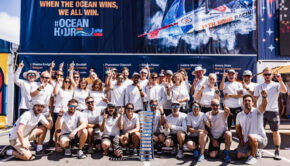
 We’ll keep your information safe.
We’ll keep your information safe.